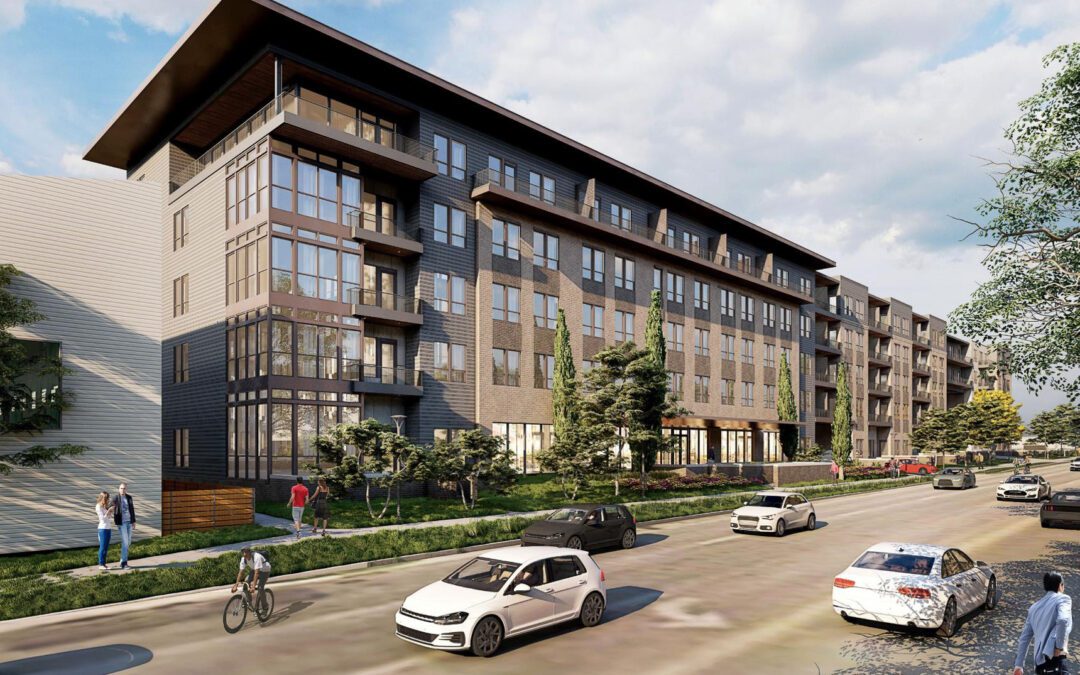
Benuzzi’s Industrial Guide
By: Molly McShane, Senior Development Manager
Conor Commercial Real Estate
Business Park Sites Continue to Lead Interest for Rapid Start-Ups and Occupancy
There has clearly been an uptick in activity within Chicago’s industrial market and business park sites are benefitting from the increased velocity of transactions. The Bureau of Economic Analysis of the U.S. Department of Commerce continues to track positive business investment activity tha reached nearly $350 billion nationally in 2013. Corporate profits have yielded strong returns and continue to mark notable progress climbing over $1.8 trillion this past year. The outlook for business investment in 2014 is also forecasted to be very strong.
The volume of commercial real estate transactions are close to First Quarter 2006 levels bolstered by the return of commercial real estate bank lending. Overall, multi-family and commercial real estate debt is expanding again for the first time since 2008, heralding a marked increase in consumer and business confidence, positive short- and long-term investment returns and the lending community’s commitment to real estate as a well-performing asset.
Based upon 2014 economic forecasts and recent reports issued on measurable economic activity within the first two months of the year, the economy appears to be continuing its slow but steady progress toward a healthier cycle. The U.S. Bureau of Labor Statistics recently released its February 2014 employment numbers reporting that non-farm payroll employment increased by 175,000 jobs. This uptick has resulted in an average of 189,000 new jobs per month that have been created over the past year. The national unemployment rate remains unchanged from January 2014 standing at 6.7%, representing a one point improvement over February 2013’s rate of 7.7%. The nation’s severe winter weather in February served as a contributing factor in the overall slower than anticipated growth in the economy resulting in a sharp rise in energy costs that affected business operations and dampening consumer spending.
Several reports prepared in Fourth Quarter 2013 for the local Chicago market bear witness to the slow return of the economy but also support an encouraging outlook for industrial build-to-suits and speculative development in the coming year. Business park sites typically provide the most rapid project start-up opportunities. That is because business parks are typically designed to accommodate diverse site plan configurations that can easily be altered to support the needs of a build-to-suit requirement. This factor, together with the advantages of existing roads, direct access to utilities and a seasoned development team, can provide an accelerated project start-up.
A standing example of the advantages of business park sites is the recent development of the 347,400-square-foot build-to-suit headquarters for Orbus Exhibit & Display Group located within Conor Commercial Real Estate’s Union Pointe business park in Woodridge, Illinois. Orbus wished to relocate within the I-55 Corridor and required a sizable office component and a large, customizable production and warehouse area to support its growing business needs. Union Pointe is also home of the 362,500-square-foot Edward Don & Company build-to-suit, the initial development within the park. The delivery of Edward Don resulted in the completion of access roads, utility tieins and allowed the seasoned development and design/build team to execute a fast-track construction schedule for this global foodservice equipment supplier. The Union Pointe business park supported the timeline and goals of Orbus Exhibit & Display Group due to its start-up advantages to provide for the completion of its new corporate headquarters in April 2014.
As cited in the Q4 2013 Chicago Industrial Market Overview prepared by Colliers International, net industrial absorption remained positive even though construction completions in 2013 were more than double the projects delivered in 2012. In fact, Chicago’s vacant industrial supply as measured at year-end 2013 declined 10.2 million square feet from the previous year, leaving an inventory of 114.5 million square feet of space available within the market.
The Collier’s report also indicated that leasing activity in 2013 totaled 35.7 million square feet which tracked slightly higher than activity levels in 2012. Tenant requirements have also shifted as users seek space greater than 350,000 square feet as evidenced by 2013’s activity that logged 14 transactions of this size or greater. Industrial sales continue on a positive upswing as reported by Colliers with year-end 2013 volume standing at 17.8 million square feet closely tracking to 2012’s volume of 17.6 million square feet.
JLL’s recent Industrial Highlights, Chicago, Q4 2013 also notes the nation’s continued economic recovery and cites brighter forecasts for Chicago’s secondary submarkets including the I-39 Corridor, Northwest Indiana and I-57 Corridor. As cited in the report, the list of markets drawing the highest interest for both tenants and developers are the O’Hare and I-55 markets where the majority of investment and development activity is currently taking place. Following those popular markets is Southeast Wisconsin that recently secured the largest transaction of the year with the selection of a Kenosha site for the new Amazon distribution facility. JLL also cites that new construction activity in the industrial sector of the market currently stands at 8.4 million square feet. Since Chicago’s industrial market relies heavily upon the manufacturing and distribution sectors, forecasts from the experts within the supply chain management business are often carefully examined to provide insights to the outlook for our local economic forecast. In the December 2013 Semi-Annual Economic Forecast from the Business Survey Committee of the Institute for Supply Management™ (ISM), the following outlook was presented:
- Manufacturing Growth Expected in 2014
- Revenue to increase by 4.4%
- Capital expenditures up by 8.0%
- Capacity utilization currently at 80.3%
- Non-Manufacturing Growth Projected in 2014
- Revenue anticipated to increase by 3.6%
- Capital expenditures up by 4.6%
- Utilization of current capacity at 86.3%
As shown above, the U.S. manufacturing sector continued to remain optimistic about growth in 2014 with revenues expected to increase in 16 manufacturing industries that include: Textile Mills; Plastics and Rubber Products; Miscellaneous Manufacturing; Food, Beverage and Tobacco Products; Furniture and Related Products; Wood Products; Electrical Equipment, Appliances and Components; Primary Metals; Non-metallic Mineral Products; Chemical Products; Transportation Equipment; Paper Products; Computer and Electronic Products; Printing and Related Support Activities; Apparel, Leather and Allied Products; and Fabricated Metal Products.
The non-manufacturing sector predicts that 14 of its industries will also witness improved revenues. The top 14 non-manufacturing industries expecting revenue improvement in 2014 as compared to 2013 are: Professional, Scientific and Technical Services; Management of Companies and Support Services; Other Services; Wholesale Trade; Finance and Insurance; Educational Services; Retail Trade; Real Estate, Rental and Leasing; Construction; Arts, Entertainment and Recreation; Information; Public Administration; Transportation and Warehousing; and Utilities.
Capital expenditures, a major driver in the U.S. economy, are expected to increase by 8% within the manufacturing sector and enjoy a 4.6% uptick in the non-manufacturing sector. Manufacturing expects that its employment base will grow by 2.4%, while non-manufacturing firms expect employment growth of 2.1%. It appears by all accounts that 2014 will continue to bolster confidence that the commercial industrial market in Chicago is a vibrant, active segment that will benefit tenants and business park developers in the months to come.
Molly McShane serves as a Senior Development Manager for Conor Commercial Real Estate, a member of The McShane Companies. She is a 10-year veteran of the commercial real estate and design/build construction industry offering extensive experience in the acquisition, disposition, development, leasing and management of commercial real estate including properties within the industrial, office, healthcare and multi-family sectors.






